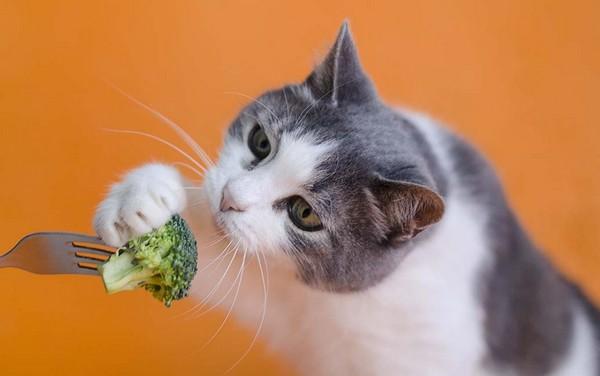As cat owners seek the best nutrition possible for their pets, natural diets quickly come into play, and qualities such as safety, sustainability and high protein are sought after.
The natural cat foods category is experiencing many of the same trends as other pet food segments, according to industry insiders. For example, product manufacturing transparency is a top concern among consumers, pet specialty retailers report. 'Locally and ethically sourced, traceability and sustainability are the hot trends,' said Dave Fedorchak, vice president of procurement and research and development for PetGuard, a Sewickley, Pa.-based manufacturer of natural pet foods.
Mary Helen Horn, president of Ziwi USA, an Overland Park, Kan.-based manufacturer, agreed, adding that cat owners 'want clean, safe and sustainable sourcing from countries and companies that are known to be trustworthy.' This focus on safety and sustainability doesn't end with the food itself. Even pet food packaging is on the cat-owning customer's radar.
'With the increase in global sustainability awareness and efforts, a large majority of customers prefer packaging that follows the reduce, reuse, recycle methodology,' Horn said. 'Many pet parents around the world want to see less plastic and more packaging that is recyclable or has multiuse functionality.'
However, the desire to protect the environment does not trump demand for food packaging that is easy to open and store, insiders said. 'They're looking for packaging that is recyclable and functional,' Fedorchak said. 'Our food comes in cans that are easily recycled, and our dry food bags are resealable, which means they can last on the shelves after they're already opened.'
Taylor Foster, store manager at Bon Pet Supply in Colorado Springs, Colo., reported, 'Tetra Paks are increasing in popularity because of their earth friendliness and the fact they can be sealed easily for storing until the next feeding.' Lisa McKitrick, co-owner of Boofy's Best for Pets, a pet supply store in Albuquerque, N.M., said that, over the years, wet food pouches have become quite popular.
And cat owners shopping at The Natural Pet Outlet's two Connecticut locations appreciate easy-open cans, said partner Ray Arabia. 'A lot of customers are looking for pop-top containers or a block of meat they can cut and refreeze themselves,' he said. As for the contents of the packages, pet owners are seeking minimally processed, natural ingredients, high-protein content, variety and function. 'Pet parents are doing more research and getting better educated on the nutritional needs of their cats, so they are buying higher-quality products that contain more meat, without all the fillers, gums and binders,' Horn said.
Chanda Leary-Coutu, director of consumer experience for Wellness Natural Pet Food, a brand of Tewksbury, Mass.-based manufacturer WellPet, reported seeing 'cat parents [looking] to experiment with trending ingredients,' such as incorporating grains into cats' diets and seeing 'wholesome ingredients that they'd eat themselves, like flaxseeds, carrots and cranberries.'
At Bon Pet Supply, natural cat food shoppers want lower-carb diets.
'Grain free versus grain in doesn't seem to be as big of a concern as it used to be, as long as the ingredient panel reflects a wholesomely sourced, high-protein-content, low-carb diet,' Foster said. 'Limitations in ingredients is also popular, where people are asking for only one category of protein—poultry or fish or red meat exclusive.'
Ultimately, owners want a healthier cat, Arabia said. To achieve this, he finds more customers switching from dry food to wet food, and then migrating to raw. 'They want a food that won't cause UTIs or obesity,' he said. 'They want fewer vet bills, and they think more natural and raw food will do that.'
Education - A Knowledgeable Staff Better Educates Customers
Nutrition is a critical factor for health and longevity, so pet specialty retailers and natural pet food manufacturers place a huge emphasis on education.
'[It's] key to a consumer's understanding of why natural foods are so beneficial to pets,' said Chanda Leary-Coutu, director of consumer experience for Wellness Natural Pet Food, a brand of Tewksbury, Mass.-based manufacturer WellPet. 'Learning about the key health and overall wellness benefits that natural recipes have over other products that may contain fillers and artificial components is likely to be the reason why consumers choose to purchase natural recipes over anything else.'
Because of this, both manufacturers and retailers make consumer education a priority. The first stop is store staff, industry insiders said. 'We want our retail partners to be as passionate about our food as we are, so we've put in place store associate trainings for their employees so that they can understand all things PetGuard,' said Dave Fedorchak, vice president of procurement and research and development for the Sewickley, Pa.-based pet food company. 'That way, if someone has a question or concern about our food formulas, they'll be prepared with the information to not only assuage concerns, but to recommend our food.'
Some manufacturers offer in-person training, while others provide digital options or a combination of both.
'We partner with our retailers to provide in-person training as well as our new online training module that educates retailers and their team on the benefits of a natural cat food diet and proper pet nutrition,' said Mary Helen Horn, president of Ziwi USA, an Overland Park, Kan.-based pet food manufacturer.
Video is a significant communication technique for consumers, said Lisa McKitrick, co-owner of Boofy's Best for Pets, a pet supply store in Albuquerque, N.M., so she asks brand reps 'to participate in live video broadcasts to talk about their foods.' Still, video and other digital options do not eliminate the importance of face-to-face communication, retailers said.
'An educated sales staff is the most effective way to introduce customers to natural diets,' McKitrick said. 'And we expect our team to speak knowledgeably about the foods we offer as well as pet nutrition in general.
'We want all of our customers to be able to read an ingredient panel and know what constitutes a 'good' ingredient and a 'bad' ingredient,' she added. 'Decisions should never be made based on a cute commercial or misleading packaging, but that's what influences many purchases.'
Testimonials from staff educate customers and build trust and repeat business. 'We share our personal experiences with them about issues we've had with lesser-quality foods and hope they understand that we aren't just 'making a sale' when they come in,' said Taylor Foster, store manager at Bon Pet Supply in Colorado Springs, Colo. 'We want what is best for their cats, so we suggest and recommend things we actually think are helpful and good. This helps build trust between us and them, and then they are more comfortable asking for help and more inclined to take our advice.'
Defining the Terms: Juggling Organic and Natural
In the natural pet food category, there remains much confusion. Because the term 'natural' is unregulated, definitions can vary and remain subjective, industry insiders said. Add in the term 'organic,' and customers can get overwhelmed.
To simplify things, Dave Fedorchak, vice president of procurement and research and development for PetGuard, a natural pet food manufacturer in Sewickley, Pa., describes the terms this way: 'Organic diets refer to the way that produce and livestock are grown and raised, whereas natural is food without artificial ingredients, coloring, flavors or preservatives.'
Sometimes, consumers confuse the two.
'Some customers think that 'natural' is synonymous with 'organic' and will come in asking for organic food,' said Lisa McKitrick, co-owner of Boofy's Best for Pets, a pet supply store in Albuquerque, N.M. 'Then they get sticker shock!'
To help customers with their sticker shock, McKitrick spends time educating customers on the differences.
'Organic cat foods are made from ingredients that have been raised or grown without synthetic pesticides, synthetic fertilizers, antibiotics and added hormones,' she said. 'The foods will also be GMO free. At least 95 percent of the ingredients in the food must be organic for the food to be certified and labeled as organic.
'When the difference is explained, most realize that 'natural' is what they are seeking and that there are plenty of excellent options for almost any budget,' she added.
Helping consumers understand natural foods can mean breaking down misinformation.
'The priority and challenge in educating pet parents about natural food is ensuring they have access to both appropriate and factual information,' said Mary Helen Horn, president of Ziwi USA, a pet food manufacturer in Overland Park, Kan. 'In today's age of the internet and access to so many social media sites, we have encountered and spoken to so many pet parents who have been misinformed or misguided on the principles of feeding a natural food with natural ingredients.'
by SANDY CHEBAT
You could be interested: Keeping the Doctor Away With Algal Omega-3s Each Day



































